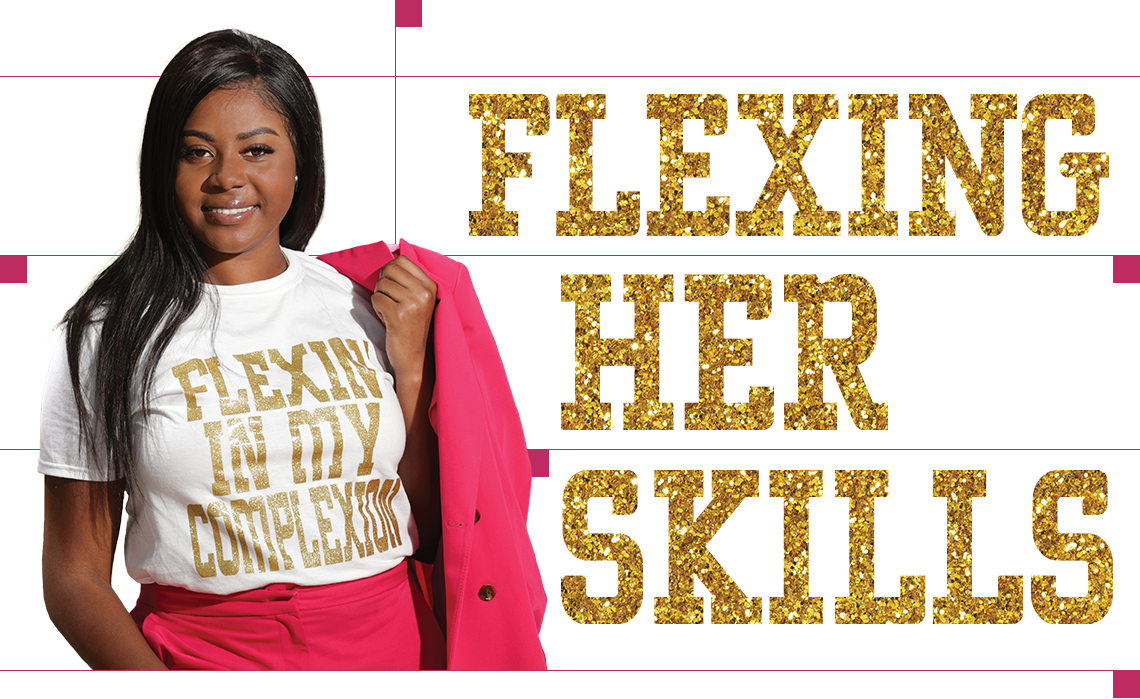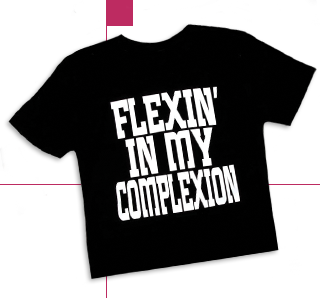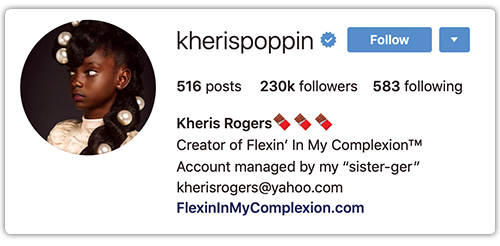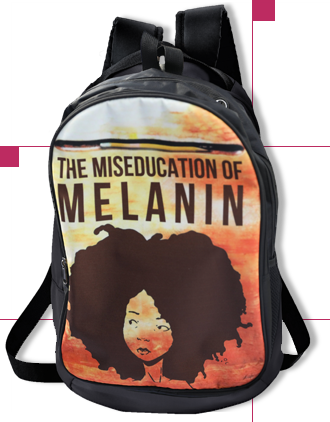How Taylor Pollard ’16 and her sister built a celebrity-favorite clothing line overnight using social media.
BY MADELINE ADAMO
Kheris Rogers, 13, went from being bullied in school for her skin tone to modeling for Nike. But she couldn’t have done it without her big sister, UCR alumna Taylor Pollard. We sat down with the 24-year-old Los Angeles native to learn how posting a picture of Kheris on social media with the hashtag #FlexinInHerComplexion inspired an apparel line now endorsed by celebrities such as Alicia Keys and Lena Waithe. The sisters also started a nonprofit foundation that aims to empower young people of color.
How did you come up with the phrase “Flexin’ In My Complexion”?
“Flexin’ my complexion” is actually a phrase our grandmother would always say to us. She is from Louisiana. She used that phrase to empower Kheris to love herself and who she is.
How did the apparel line start?
I just posted a picture of Kheris on Twitter, and it went viral. That’s when we decided we were going to create T-shirts, because so many people were reaching out to us saying they could relate to her story as far as being bullied in school for her skin complexion, or for any other reason kids are bullied in school. In the original tweet, I used the hashtag #FlexinInHerComplexion, so we decided to use that phrase on the T-shirts. I think everything was just completely organic, which is crazy because people go viral every day on the internet, but not that many are able to turn that viral moment into a long-lasting thing.
Your mom gave you and your sister $100 to start the business. What did you do first?
We purchased 20 T-shirts, and we started a website on Squarespace. We posted the shirts, and they sold out in like 10 minutes. We took the profit, and we made more T-shirts — we just kept flipping the money. With a business, you don’t have to start off with a lot. It is more about being consistent.
Did you create a business plan?
We never had a business plan. Everything has been completely organic and consistent with what Kheris stands for. But with me studying photography at UCR, I really learned the technical aspect of photos and implementing colors. It all kind of helped, especially with building a brand on social media. The message behind the photo matters, but it’s that photo that will make people stop.
I try to post once or twice a week on Instagram. We actually sat down with Instagram, and they said we’re supposed to be posting at least once a day. But it’s hard to create that much content. The thing with social media is that you never know what will happen next. But we just keep pushing forward and staying true to what we feel like the brand stands for.
What else did you learn from Instagram?
Instagram noticed what (Kheris) was doing with her platform, and they saw she was growing. They gave us insights, and that’s where we really learned more of the technical aspects, as far as having a target audience, and how hashtags can help you grow. If you are trying to build a social platform, it’s important to know what your target audience is and what time of day is better to post.
Many celebrities have taken notice of the brand.
How does that make you feel?
It’s an amazing feeling knowing someone on such a huge platform notices what we are doing and wants to be a part of it. Whoopi Goldberg wore our shirt to New York Fashion Week — that’s huge! Or LeBron James wanting Kheris to be a part of what he is doing with Nike, or Alicia Keys posting Kheris a few times on her social media, or Lupita Nyong’o — she’s in two No. 1 movies — and she posted a picture. We didn’t even know she bought a T-shirt. These people are A-list celebrities. It makes us realize what we are doing is completely relatable to so many people across the world and something that needs to be talked about more.
Do you have any advice for entrepreneurs marketing through social media?
The No. 1 thing is understanding your target audience. If you want to have a brand, you have to be able to step out of what you like and look at what your audience is going to like. It’s tricky, but if you look at a lot of the major platforms, you will see them post different things to appeal to a wider audience. Diversity is super important.
What else does your job entail?
I answer all of the email, and I will go with (Kheris) to set and stuff like that. Sometimes, I do her makeup and hair and help her have her looks together for appearances. So a little bit of everything. My official title is CFO.
What does Kheris’ role look like?
She is the face of the brand, so that is hard work too. A lot of times, we will go places and people will recognize her, and they will want to take pictures with her, so she has to make sure she is always on point. She also has the creative role of thinking of new clothes and content, and any new posts and videos. For a 13-year-old, she is doing a lot.
Have you made any mistakes you’ve learned from?
My family doesn’t have a business background, and I don’t think I really know any entrepreneurs, so in the beginning, we really were just figuring it out for ourselves and trying to do what felt right. I definitely made a lot of mistakes, one being that on social media you have brands wanting to work with you, so people are going to give you contracts. But I didn’t know how to read contracts. A mistake was signing off on things when we didn’t necessarily know what it meant or agreeing to a (fee) that was way lower than the brand was worth. If you are growing faster than what you have knowledge about, ask for help. My lesson from that was to get a lawyer that reads contracts and understands the language. Another lesson learned was finances. Don’t be afraid to find an adviser and ask questions.
Visit creatorstate.ucr.edu to hear Pollard and other guests talk about their stories of social innovation, art, and entrepreneurship on UCR’s podcast, “The Creator State.”




